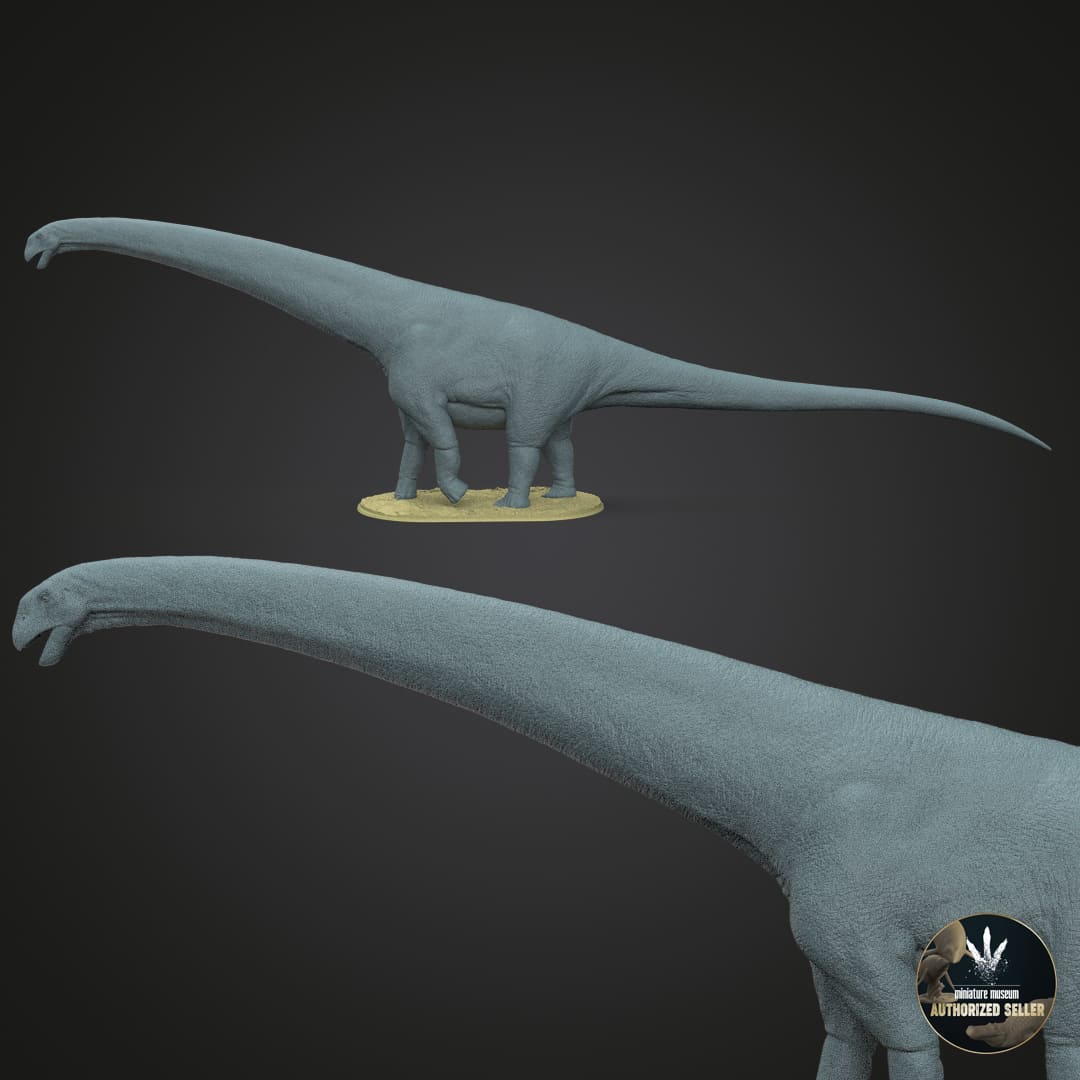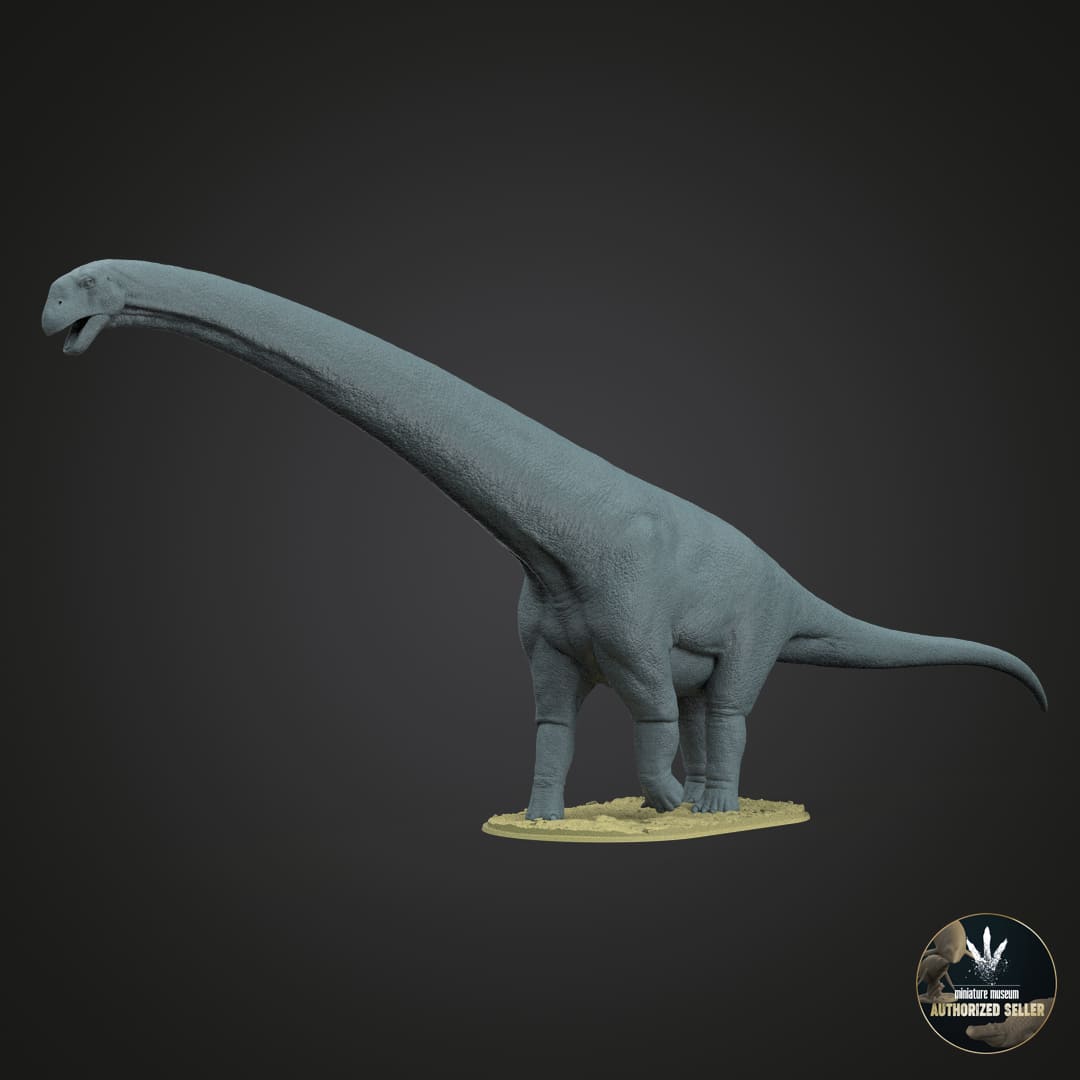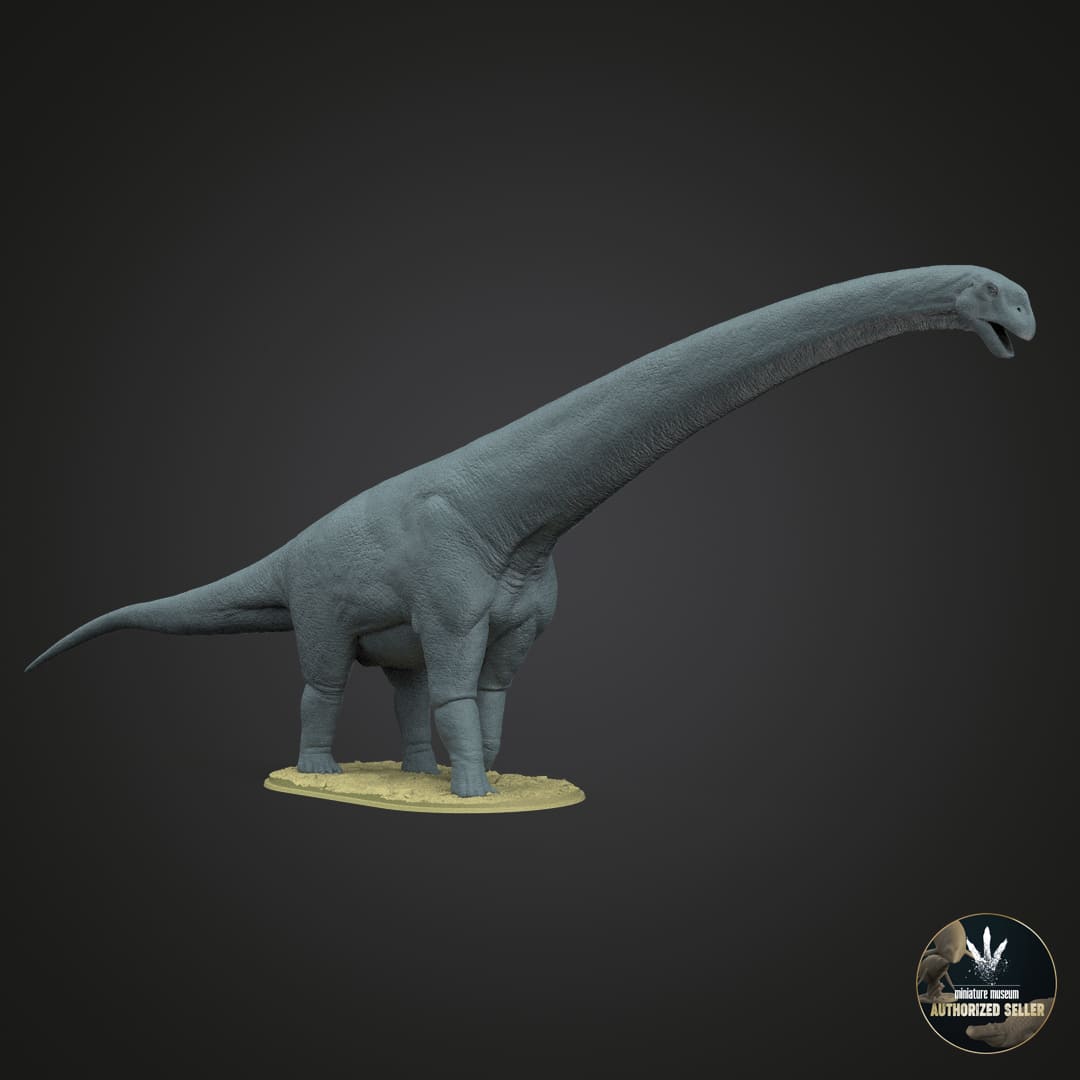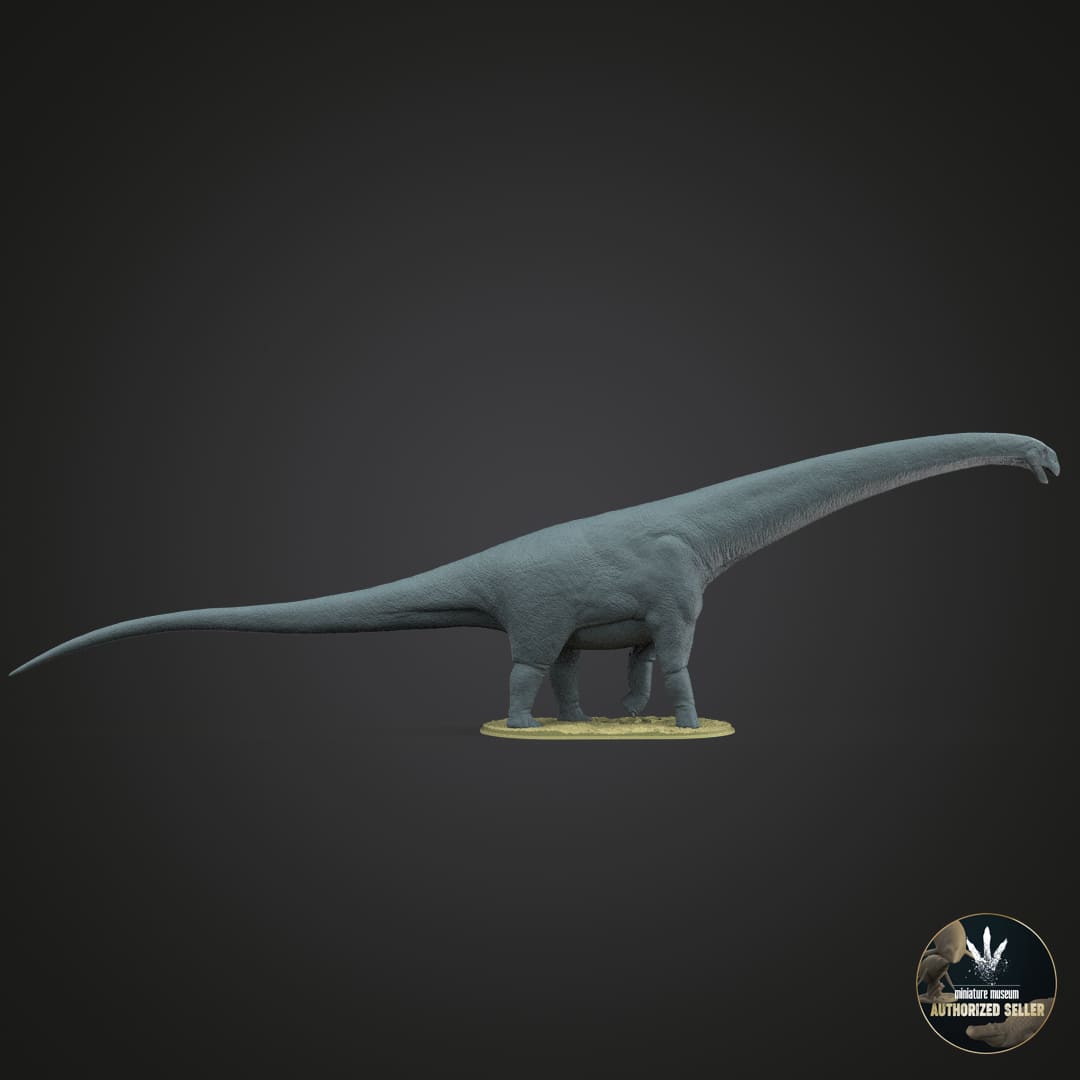





Argentinosaurus huinculensis
Do you want another scale?
Contact us and we will make it possible!
How will you receive your replica?
In the unprimed and primed variants, you will receive the complete replicas except for the large models, where you will receive an assembly kit.
In the hand-painted variant, the replicas will be delivered complete.
How does the painting service work?
We created a private chat for you where you will have direct communication with our painter , being able to choose your preferred color schemes and follow the hand painting process closely.
Pairs well with

Argentinosaurus huinculensis
If you have any questions, you are always welcome to contact us. We'll get back to you as soon as possible, within 24 hours on weekdays.
Shipping Information
Visit our shipping policy page to find all the information.
Customer Support
Give us a few details and we’ll offer the best solution. Connect by chat or email.
We are available 24/7.
FAQ’s
Visit our FAQ's page to find answers to common questions.
Contact Us
We'd love to hear from you. We are here to help. Visit our contact page to send us a message.
Product details
Argentinosaurus huinculensis is estimated to have reached between 30 and 35 meters in length, although some paleontologists have suggested that it could have exceeded 40 meters, and its weight is estimated to have ranged between 70 and 100 tons. These numbers place it among the largest land animals ever, rivaling in size other giant titanosaurs such as Patagotitan and Dreadnoughtus. Its massive size is the result of evolutionary adaptations that optimized its metabolism, locomotion, and feeding to support such a large body frame. Like other sauropods, its body was massive and supported by robust, column-like legs, which provided stability and supported its immense body weight.
The neck of Argentinosaurus was extremely long and muscular, composed of a series of hollow but reinforced vertebrae, allowing for a combination of strength and relative lightness to reduce the strain on its muscles and joints. This long neck allowed it to reach leaves and vegetation in the treetops, accessing resources that other, smaller herbivores could not reach, and gave it a nutritional advantage in the dense forests of Cretaceous South America. Its skull was small in comparison to its body, typical of sauropods, and was equipped with spoon-shaped teeth, suitable for tearing and crushing vegetation. It likely fed on ferns, conifers, and broad-leafed plants, adapting to a varied diet in the subtropical environment in which it lived.
The torso of Argentinosaurus huinculensis was broad and deep, providing space for the large lungs and digestive system necessary to process the enormous amount of vegetation it had to consume daily to sustain its giant body. This dinosaur possessed an advanced respiratory system with air sacs similar to those of modern birds, which would have improved the efficiency of oxygen absorption and allowed for a constant flow of air, something crucial for an animal of its size. The presence of these air sacs also helped reduce the weight of the vertebrae, making it lighter without losing the necessary structural strength.
The tail of Argentinosaurus was equally impressive in size and performed a stabilizing function by balancing the weight of its long neck. In addition, it may have used its tail as a defense mechanism against predators, since it inhabited a region where large theropods, such as Mapusaurus, coexisted, which could have attempted to attack juveniles or weakened individuals of Argentinosaurus. However, adults probably lacked natural predators due to their size.
The fossil remains of Argentinosaurus huinculensis are fragmentary and consist mainly of vertebrae and parts of the limbs, but its discovery remains crucial for paleontologists, who have been able to reconstruct its size and body shape from these incomplete bones and from comparisons with other, better-preserved titanosaurs. Its discovery has helped confirm that South American titanosaurs reached exceptional sizes and that the Cretaceous ecosystems of this region were capable of supporting giant animals thanks to their abundant vegetation and favorable climates.
Overall, Argentinosaurus huinculensis represents one of the most extreme achievements of sauropod evolution, adapted to live in subtropical environments and compete with other giant herbivores for resources. Its colossal size, along with its adaptations in the respiratory and skeletal system, make it one of the most fascinating and emblematic dinosaurs of South America, and it remains a symbol of the giant titanosaur era of the Cretaceous in Patagonia.
Approximate measurements of the Argentinosaurus:
- 1:100 scale - 2-piece assembly kit
- Length 291 mm
- Height 82 mm
- Width 30 mm
- Snout-tail length 313 mm
- 1:72 scale - 2-piece assembly kit
- Length 404 mm
- Height 114 mm
- Width 41 mm
- Snout-tail length 435 mm
- 1:57 scale - 2-piece assembly kit
- Length 510 mm
- Height 143 mm
- Width 52 mm
- Snout-tail length 549 mm
- 1:35 scale - 3-piece assembly kit
- Length 831 mm
- Height 233 mm
- Width 85 mm
- Snout-tail length 895 mm
- Painted 1:35 scale replicas will be shipped in custom-made wooden boxes for added protection during shipping.
Information about aftershocks
Collector's item ; Hyper-realistic replica, highly detailed and with a high degree of scientific precision.
Made to scale, prototyped in resin and with a scenic base in most of the models offered. If you like miniatures, both for collecting and for painting, we offer you a wide variety of scale replicas; All of them related to dinosaurs, extinct prehistoric fauna and current fauna.
So if you love dinosaurs and animals as much as we do, this is your favorite store to collect and paint them :)
We are authorized distributors of all the replicas and figures we offer. We use 3D printers with 8K - 14K resolution, and high-quality resins with additives to improve hardness and flexibility, thus offering replicas of impeccable quality.
Different scales will be used to make the replicas (depending on the size of the species), although we are open to making other suggested scales upon request as long as they fit in our printing trays, for which you will have to contact us via email and request the required size.
Replicas are supplied with the option of airbrush priming in dark grey. If you require another colour, please let us know which one you prefer in the box with special instructions for the seller. Without priming, we do not guarantee that the resin will accept paint.
We also offer the option of choosing a professionally painted replica, which is agreed upon throughout its development with the painter, through a private chat available.
Complete replica (one piece): We supply complete replicas in those models that are small, and models that are medium, large or not very bulky, will have the prerogative of being presented as a complete replica or assembly kit as the case may be.
Complete replicas will be supplied separately from their base.
Replica assembly kit: We supply replicas whose models are large, very large or bulky, only with this option.
The indicated replicas (generally composed of base, head, body and tail) will come prepared for the subsequent assembly that will be required by the client, by sanding, putty, adhesive or technique chosen by the client.
All replicas are thoroughly inspected before shipping and will be carefully packaged to prevent damage during transport.
Information about the models
The poses of the models aim to represent each character in the most scientifically viable way, thus revealing the life and customs of prehistoric and modern fauna.
Each character has its own personality and develops in different life scenarios; birth, adolescence and play, hunting, feeding, fighting, courtship, death and many other scenes from their daily life, always from the creative perspective of their designers.
Handmade
All orders are individually prepared on the cutter for subsequent prototyping, obtaining a resin part that will require post-processing by manual and ultrasonic cleaning, support removal, ultraviolet curing, labeling and packaging.

We are authorized distributors
We offer both our own physical replicas and those that have been modeled by many of the best 3D designers, in order to offer you the greatest possible variety.
Frequently Asked Questions
If you have any questions about products, orders or shipping, please read our FAQ page to learn more.
